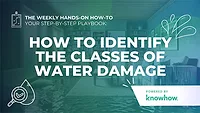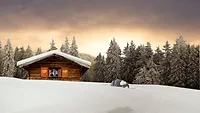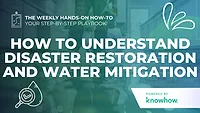Weekly Hands-on How-To powered by KnowHow
How to Identify the Different Categories of Water Damage
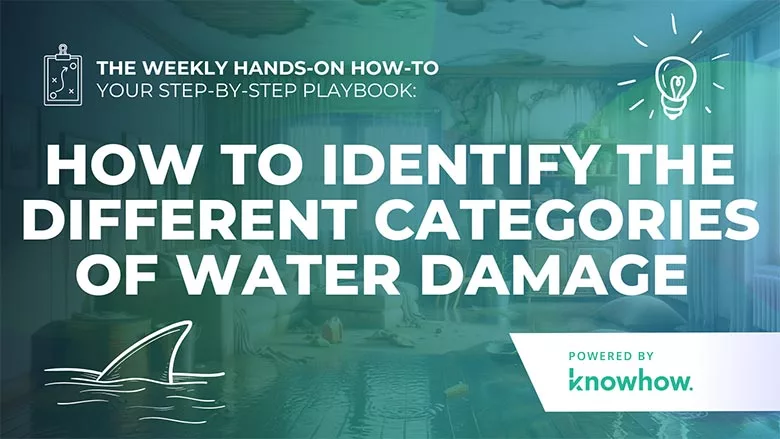
Navigating the complexities of water damage restoration begins with mastering the basics. Yet, surprisingly, many new water technicians find themselves wading through murky waters when it comes to understanding the differences between water loss categories.
For perspective, 61% of restoration companies specialize in water damage services. This begs the question: Why does such a fundamental aspect of our work often become a bottleneck in operations due to a lack of knowledge?
This gap in understanding not only slows down the pace at which we can respond to disasters, but also burdens our more experienced technicians with constant calls and questions from those newer to the field. It's a cycle that KnowHow is determined to break.
Note: This Weekly Hands-On How-To was based on this template in KnowHow’s template library.
So, let's dive in and empower your technicians with the fundamental knowledge they need to tackle any water loss confidently.
What are The Classes of Water Damage?
Water damage can vary in severity and contamination level. These can be categorized into three main types:
Category 1: Clean Water
Category 1 water is what we consider 'clean'— originating from sanitary sources like kitchen faucets or toilet tanks. Though it poses little initial risk, without prompt treatment, it can escalate to Category 2, complicating the restoration process.
Category 2: Grey Water
Category 2, or 'Grey Water,' introduces a higher level of complexity. This water, tainted with contaminants from sources like dishwashers and washing machines, can cause discomfort or even illness if not properly managed. Immediate and thorough cleaning is essential to mitigate health risks.
Category 3: Black Water
Black water is the most severe, containing harmful contaminants from sewage, floodwaters, or other unsanitary sources. It can contain things you don't even want to think about — fecal matter, chemicals, you name it. It's a health hazard.
How To Assess Water Damage:
Step 1: Thorough Investigation
Begin with a detailed examination of the water damage. This involves identifying the source, estimating the duration of exposure, and assessing any contributing factors. This foundational step is critical for accurate categorization and devising an effective response strategy.
Step 2: Clean Water (Category 1)
Clean Water loss situations involve minimal health risks, primarily involving water from clean sources such as supply lines or appliances. With timely and proper drying techniques, most affected materials can be salvaged, preserving the integrity of the property.
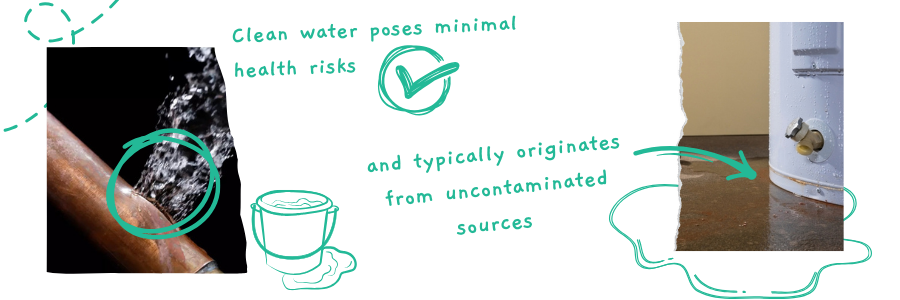
Examples:
- Split or burst supply lines
- Malfunctioning appliances
- Overflowing sanitary fixtures
Step 3: Grey Water (Category 2)
Grey water contains contaminants that require immediate attention and can prevent health issues. It originates from sources like dishwashers or washing machines and may contain substances that require thorough cleaning of affected materials.
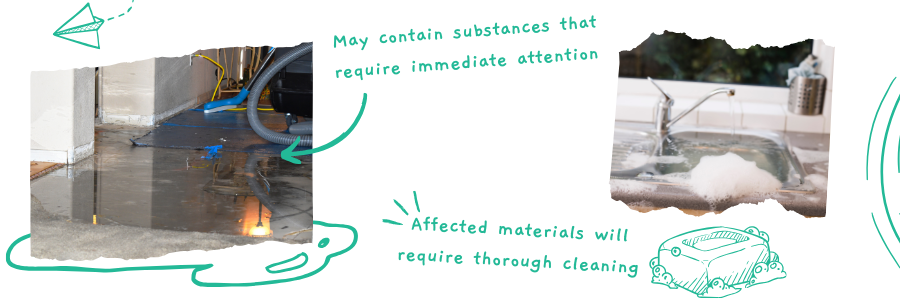
Examples:
- Dishwasher overflow with detergent
- Leaking washing machines
- Seepage that brings soil and pollutants
Step 4: Black Water (Category 3)
This isn't just water that's picked up a few contaminants along the way; it's seriously contaminated, often with sewage, floodwaters, or other sources that are far from sanitary. The risk here isn't just about getting wet — it's about the serious health hazards from pathogens, chemicals, and other nasty stuff found in sewage or affected by natural flooding.
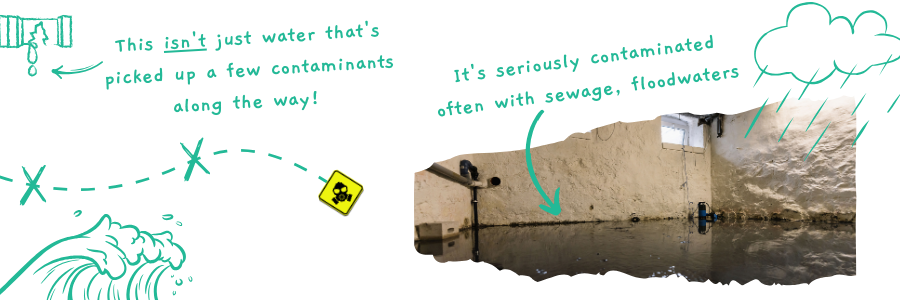
Examples:
- Sewage backups
- Natural flooding
- Toilet overflows with feces
Step 5: Special Situations
Certain scenarios may require specialized expertise and additional safety measures. These situations, such as dealing with toxic substances or mold infestations alongside water damage, necessitate coordinated efforts to address unique challenges effectively.
Mastering water damage restoration starts with getting the basics right, yet it's surprising how this foundational knowledge can become a blocker in our day-to-day hustle. This knowledge gap doesn't just slow the pace — it turns every call into a learning curve for the newer members of your crew, leaving the veterans to bail out more than just the water.
That's where KnowHow swings into action. We're not just about giving your technicians a fishing rod; we're here to teach them how to fish, ensuring they can identify, assess, and address any task with the clarity and confidence needed to categorize and conquer water damage.
Discover how KnowHow can transform your team's approach to water damage restoration and elevate their capabilities. Visit us at tryknowhow.com to learn more.
Looking for a reprint of this article?
From high-res PDFs to custom plaques, order your copy today!



